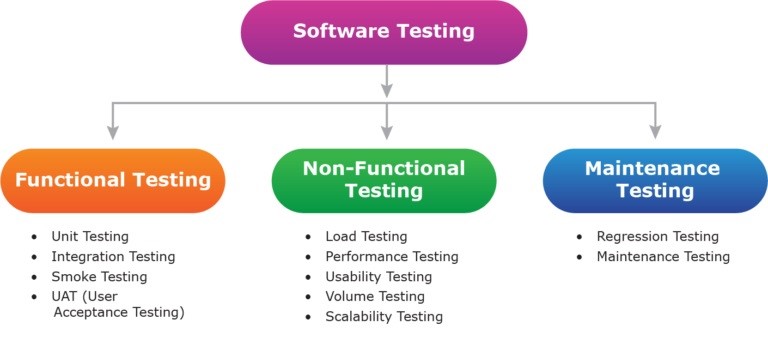
If anyone had to pick one primary thing which shaped the day-to-day human culture in the past 20 years, it has to be the Internet and the explosion of social media applications. It’s like a part of daily routine of the current generation. All of us use social media for various direct and indirect purposes. To connect with the world, Entertainment, Businesses, Finding or offering jobs, Information gathering… the list is endless. But as we depend on them so much, it is necessary that these apps should be authenticated and verified thoroughly. Otherwise, they could bring about high-security breaches, which is unhealthy for the culture. Moreover, thousands and millions of Businesses and People are using these apps to make the ends meet. Any improper use of them in any strand can lead to a severe issue. Therefore, it becomes prominent to test these Social Media apps properly. Here, we are going to talk about the Proper Testing of Social media applications.
Why is it necessary to do the testing?
As estimated in a recent study by our folks at Statista, the number of users of Social media apps is to rise to about 3.2 Billion users in 2021. Considering this, any major error in the testing of these apps is quite affordable as the error might affect half of the worldwide population.
Different Models of Social Media Testing
Testing social media apps is not as easy as using it. It requires a dedicated expertise in the field, a sense of the digital culture and a proper skillet. The types of testing include:
-
- Enterprise software testing: These apps are generally very vigorous to test as they are used by a large number of users and hence require crisp security testing and a technically sophisticated enterprise testing remedy.
- Web 2.0 Testing: Early involvement of testers is essential to the testing process as these apps are Web 2.0 Applications. Due to their susceptibility to frequent changes, the test cases of these apps should be preferably automatized.
- The Web Testing of these social media apps should be done considering its Compatibility, Functionality, Security Testing, Performance and Database testing etc.
- SaaS testing: Software as a Service model also known as SaaS testing is a method to authenticate correct functioning of these apps.
- Web Analytics Data: As Social media holds and works along with large amount of data, it collects, analyses and reports the data based on user’s earmarks. Web analytics testing helps in doing so.
- Acceptance Testing: This includes tests for apps’ engaging and user-convenient attitude.
- Content Management Testing: As we know that there is an enormous amount of content on these applications. Every day, thousands and millions of users upload large bunch of content. YouTube, Facebook, Instagram, Snapchat and many other applications are used for content creation. To keep check on what is being posted and to check whether its appropriate or not is a constant task. It is a requirement to manage this content and avoid any content-related concern.
- SEO testing: Search Engine Optimization testing, commonly known as SEO testing is a necessity to boost up your applications online. It guarantees your application’s growth and development.
- Online Advertisement Application Testing: In the current Scenario, Online advertisement is largely used by people to promote their businesses. Authentication of the functioning of these Online Advertisements becomes a key factor in testing.
Testing Process
A proper step by step testing process is a sign of authentic app testing.
-
-
- Requirement Analysis
Analysing test requirements is the primary step. It includes scope determination and listing objectives of test. Basically, listing down how many and what resources you will need and how much time the test will take. - Test Planning
Like in any other project methodology, Test planning has to be done on the basis of tester’s objective. One should be clear in his mind about what does he want to achieve through the test. Based on that, a proper plan should be made. - Resource Allotment
Now based on your planning and analysis, allocate human and other resources for the testing. Decide the timing. Now before starting the test, consider the different methods used in Application testing as shown in the picture below.Here, for functional testing, jot down a few things like which OS you are using, various device platforms, networks, etc. And for Non-functional testing, select from various methods like Scalability testing, Performance Testing, Load testing etc.
- Creation of test cases
As we get near to actual testing, this is the primal necessity for testing. Here one should create test cases considering the planning done in earlier stages. A proper Document should be made which must include all the features and functions of the application. Also, the test cases should mention all the test cases of both functional testing and Non-functional testing. Usability testing, Performance testing, etc. Other than this, It should also contain remaining test cases like Memory usability, Battery consumption, Data, and Speed related details, etc. - Automated and Manual testing
It’s not all on only you neither it is all on the technology. It’s a collaboration between Automatic and Manual Testing. Hence defining the roles of each becomes important. Make sure you made different test scripts for both aspects. - Test Case execution
The time has arrived. This is the step where you actually do the testing. One can choose where he wants to execute the testing. On cloud, in physical devices, or using testing tools. - Reviewing Errors
All the bugs found in the testing should be reported to the Application development team to clear them. - Documentation
Make sure you note down all the bugs, errors, and other notes which you have found in the testing. This Documentation helps in reviewing the test and also for later tests. - Completion
The Application has to be tested again and again to make sure the bugs have been cleared. Also, to assure that the removal of bug did not affect the coding of the present functionalities. As we know, whenever any new code is added or replaced in the application, the test has to be done again. Hence there is no such thing as completion of the test. But still, A test is considered as complete when the bugs are removed.
- Requirement Analysis
-
For more effective testing, here are some expert tips.
-
-
- For Social media apps, Autonomous authentication is important.
- The tester has to be good at designing and implementing Web 2.0 testing.
- All-inclusive website testing should be carried out.
-
In conclusion, Social Media Applications are the of our times. To keep up and increase the tempo of the usage of these apps, it is quite essential to make sure they work better and are secure. So, test them out!

